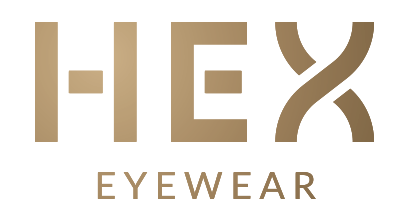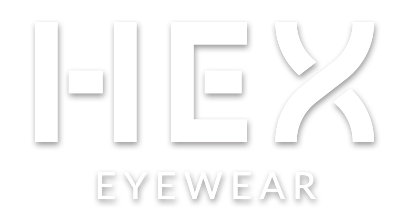Things they won't tell. Which material of eyewear are recommended? Acetate? Celluloid? Injection? or HEXETATE?

Acetate? Celluloid? Injection? or HEXETATE?
What is the difference?
Among the materials of plastic glasses, the most widely used are acetate sheet, celluloid, and injection plastic. Since HEX Eyewear has our own factory and well-experienced in production, we will talk about the origin and characteristics of these materials from a comprehensive perspective of production and market facts.
【Acetate】

Acetate is the most widely used glasses material. It has the advantage of easy dyeing, so it can make various color changes (lamination, tortoise, wood and brushed pattern...), and has high transparency and gloss. Acetate needs to be deacidified, dried and baked for a long time before it is made to improve its stability. It is also extracted from plants. Therefore, after a long time of absorption of water in the air, the frame is easily deformed. Everyone should all have the experience, after wearing acetate glasses for a period of time, you need go back and ask the store to re-adjust your frame, right?
Advantages: Color and pattern change are more varied, lighter than Celluloid, high plasticity, high gloss surface
Disadvantages: Easy to deform

【Celluloid】
It is the first thermoplastic resin invented in history. Because it can be easily formed, it is developed as an alternative to ivory, but the disadvantage is that it is extremely flammable. Since the EU banned its use in toy manufacturing in 2006, eyewear manufacturers have also begun to ban the use of celluloid material instead of acetate as the main material for the eyewear frame. Now only some factories in Japan are still using this material, so it is even more precious for eyewear collectors.
Advantages: Heavy weight with nice texture, not easy to deform, high gloss surface
Disadvantages: Heavier weight for wearing, longer preparation time, high flammability, mostly used in Japanese now only
As for hand-made glasses, many consumers misunderstand, hand-made glasses = Japanese handmade glasses = celluloid frame, in fact, a pair of glasses, whether it is plastic frames or metal frames, in the production process through polishing, hinge assembly, accessories processing, coloring...etc., all need manual processing actually.
In a broad sense, besides the glasses that are injected out of plastics (most of which require only the assembly process) can be called manual glasses. The words "hand-made glasses" are all just marketing wordings.
【Injection】
Without the gloss of the Acetate/ Celluloid glasses, the injection color is usually single color, and some of the imitation patterns are processed by painting. Since it is directly shot and formed by molds, it can be found that the post-processing part will be Only on the surface treatment of the frame and cannot be polished and trimmed afterwards like acetate and celluloid.
The best way to distinguish is the price and texture, injection glasses need to make steel molds for production, for massive production in order to have low-cost glasses. For market such as some fast fashion brands, gas stations, supermarkets, reading glasses and so on.
Advantages: Cheap, cheap, cheap
Disadvantages: Single color, poor gloss, fine details cannot be trimmed
【HEXETATE】
Innovative sheet Material by CNC – HEXETATE

Nowadays, the glasses in the market is mainly made of acetate, due to its color varieties, high plasticity, easy processing, and lighter weight than hand-made celluloid frames. However, acetate fiber still has some disadvantages due to the material chrematistic. Because it contains plant fiber, it will absorb water vapor when exposed to the air, which causes the shrinkage of the glasses, which causes the glasses to deform.
HEXETATE was developed and tested by Italian and Taiwanese factories with Chinese raw material suppliers. It has been innovated in the past 30 years and has been tested by major brands and their channels. Its non-absorbent and non-shrinking chrematistics not only make it possible to achieve the thinness that the original acetate cannot achieve, but also does not deform.
The most common and most painful condition of glasses is deformation. Because acetate glasses will be baked and cooled before being produced, but over time, water will re-run into the sheet to cause shrinkage deformation, as we call “Four-point balance” issue, and the gap at the junction of the structure of the metal parts and plastic frame will become larger and larger.
Since the weight is 11% lighter than acetate, the difference in weight can be felt in the thick-cut design of Japanese glasses, which improves the wearing comfort. The thinness of the front can even reach 2.8mm, which still retains flexibility, which is not possible with the brittle high-density sheet (HD).
Besides that HEXETATE has higher surface gloss and hardness ,in various tests HEXETATE shows that it does not contain any toxic chemicals, no acid in the process or wearing, in addition to not causing skin allergies, but also because of no acid, all materials of lens can be applied. Especially, since 2016, united states special law requires products to ban the use of materials containing bisphenol A, which is a very large impact on plastic injection glasses.
The characteristic of not being acidified, not shrinking and not deforming is also advantageous for the matching of different materials. Under the condition of stable sheet, such as painting, gluing of different materials, and inlay alignment of metal fittings, not only the manufacturing process is easier processed, but also the life of the product is greatly improved on the finished product.
Advantages: Rich in acetate color, high-hardness shiny surface, no shrinkage and no deformation, 11% lighter than acetate, more durable, can make into thinner frame
Disadvantages: Only HEX Eyewear has

There is no absolute good or bad material in the glasses industry. After understanding the characteristics, sources and price of different glasses, assessing your consuming power and preferences, with more knowledge, you can find the right pair of glasses for yourself!
Leave a comment
Comments will be approved before showing up.

